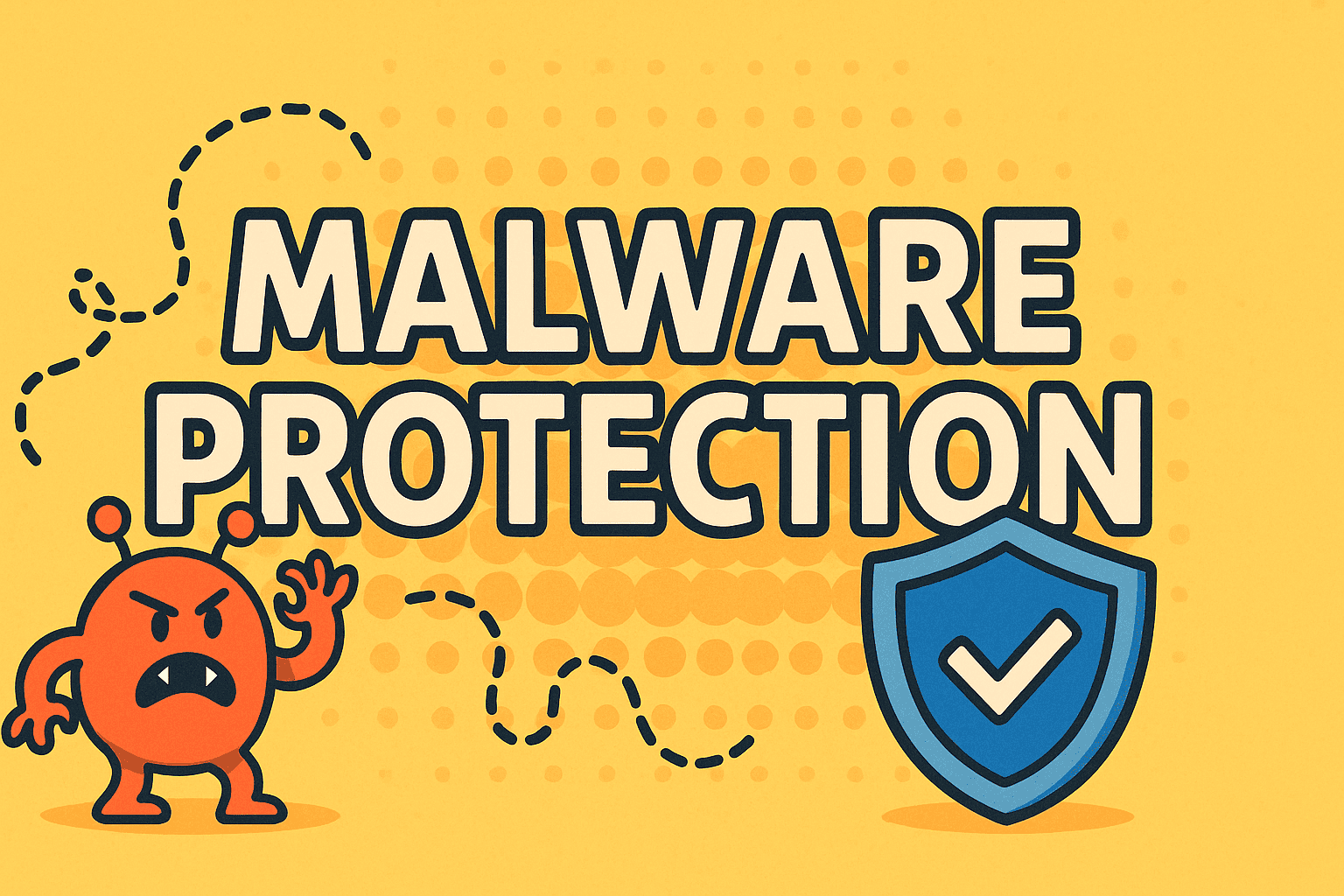Updated on September 26, 2025, by OpenEDR
Did you know that over 560,000 new pieces of malware are detected daily? Cybercriminals are constantly innovating, and businesses—large and small—remain prime targets. Whether it’s ransomware locking down your systems, spyware stealing confidential data, or trojans disguising themselves as legitimate files, the consequences of poor malware protection can be catastrophic.
Introduction: Why Malware Protection Is Non-Negotiable
For IT managers, cybersecurity experts, and CEOs, protecting business assets is no longer just about installing antivirus software. It requires a comprehensive strategy that combines endpoint security, threat detection, and employee awareness. In this guide, we’ll break down 12 proven malware protection strategies to keep your business safe in 2025.
1. Deploy Next-Generation Antivirus (NGAV)
Traditional antivirus is no longer enough. Cybercriminals use polymorphic malware and fileless attacks that bypass legacy defenses.
NGAV leverages artificial intelligence and behavior-based detection.
It blocks suspicious activity in real-time instead of relying only on signatures.
Combine NGAV with EDR (Endpoint Detection & Response) for full visibility.
This provides a stronger shield against modern malware variants.
2. Keep Systems and Software Updated
Unpatched systems are the #1 entry point for malware infections. Hackers exploit known vulnerabilities to gain access.
Enable automatic updates for operating systems and applications.
Patch third-party software like Adobe, Java, and browsers.
Regularly audit systems for outdated versions.
A robust patch management program drastically reduces malware risk.
3. Implement Strong Email Security
Over 90% of malware infections begin with phishing emails. Securing your inbox is critical.
Use advanced spam filters to block malicious attachments and links.
Deploy email authentication standards like DMARC, DKIM, and SPF.
Train employees to recognize phishing attempts.
By closing email gaps, you cut off one of malware’s most common entry points.
4. Strengthen Endpoint Protection
Endpoints—laptops, desktops, and mobile devices—are favorite malware targets.
Deploy endpoint security solutions with anti-ransomware features.
Require device encryption to protect sensitive files.
Implement Zero Trust policies for remote workers.
With remote work expanding, endpoint protection is more vital than ever.
5. Enable Multi-Factor Authentication (MFA)
Stolen credentials often fuel malware-driven breaches. MFA adds an extra security layer.
Require at least two forms of verification (password + token/biometric).
Apply MFA across VPNs, cloud services, and admin portals.
Use adaptive MFA to detect unusual login attempts.
MFA significantly reduces the chances of unauthorized malware-driven access.
6. Use Network Segmentation
A flat network gives malware free rein once inside. Segmentation limits the spread.
Divide your network into zones (HR, finance, development).
Restrict lateral movement between critical systems.
Deploy micro-segmentation for high-value assets.
This reduces the potential impact of an infection.
7. Invest in Threat Intelligence & Monitoring
Malware is evolving faster than ever. Staying informed is key.
Subscribe to global threat intelligence feeds.
Use a SIEM platform for centralized monitoring.
Conduct regular threat-hunting exercises.
With proactive monitoring, you detect malware before it causes damage.
8. Regularly Back Up Data
Ransomware thrives on holding your data hostage. Reliable backups can neutralize this threat.
Use 3-2-1 backup strategy (3 copies, 2 formats, 1 offsite).
Encrypt backups for additional protection.
Test data recovery at least quarterly.
Having clean, accessible backups ensures resilience.
9. Train Employees on Cyber Hygiene
Employees are often the weakest link in malware protection. Awareness training can turn them into your first line of defense.
Conduct simulated phishing campaigns.
Provide regular workshops on malware types and warning signs.
Encourage immediate reporting of suspicious activity.
A trained workforce reduces human error and improves overall security.
10. Secure Cloud Environments
As businesses migrate to the cloud, malware risks follow.
Enable cloud-native security tools (e.g., AWS GuardDuty, Azure Security Center).
Restrict API access with IAM (Identity & Access Management).
Monitor cloud misconfigurations that could expose data.
Cloud security is now inseparable from malware defense.
11. Leverage AI and Machine Learning
AI-powered security tools are changing the malware protection landscape.
Detect anomalies in network traffic patterns.
Automate malware analysis and threat response.
Predict potential malware campaigns using behavioral analytics.
AI gives businesses an edge against highly adaptive threats.
12. Establish an Incident Response Plan
Even with robust defenses, breaches may still occur. A tested incident response plan minimizes damage.
Define roles and responsibilities for security teams.
Document procedures for containment, eradication, and recovery.
Conduct regular tabletop exercises to validate readiness.
Preparedness turns a malware incident from a crisis into a manageable event.
Malware Protection Checklist for 2025
✅ Deploy Next-Gen Antivirus (NGAV)
✅ Patch & update systems regularly
✅ Strengthen email security
✅ Secure all endpoints
✅ Enable MFA everywhere
✅ Segment networks strategically
✅ Use threat intelligence & monitoring
✅ Backup & test recovery plans
✅ Train employees on cyber hygiene
✅ Secure cloud environments
✅ Leverage AI-powered defense
✅ Maintain a solid incident response plan
FAQs on Malware Protection
1. What’s the difference between antivirus and malware protection?
Antivirus detects and removes known threats, while malware protection is a broader strategy that prevents, detects, and responds to evolving cyber threats like ransomware and trojans.
2. Can small businesses afford advanced malware protection?
Yes. Many cloud-based solutions offer scalable pricing. Investing in protection costs far less than recovering from a breach.
3. What is the most common type of malware in 2025?
Ransomware continues to dominate, but spyware and fileless malware are also on the rise.
4. How often should malware scans be performed?
Daily scans are recommended, with continuous monitoring for critical systems.
5. Is AI reliable for malware defense?
Yes. While not foolproof, AI-driven security enhances detection accuracy and reduces response times.
Final Thoughts
Cybercriminals are more sophisticated than ever, but with the right malware protection strategies, your business can stay one step ahead. A layered defense approach—combining advanced tools, employee awareness, and proactive monitoring—is the best way to reduce risks in 2025 and beyond.
🚀 Take the first step toward stronger malware protection today.
Register for Xcitium’s OpenEDR platform and gain industry-leading visibility, detection, and response capabilities.
